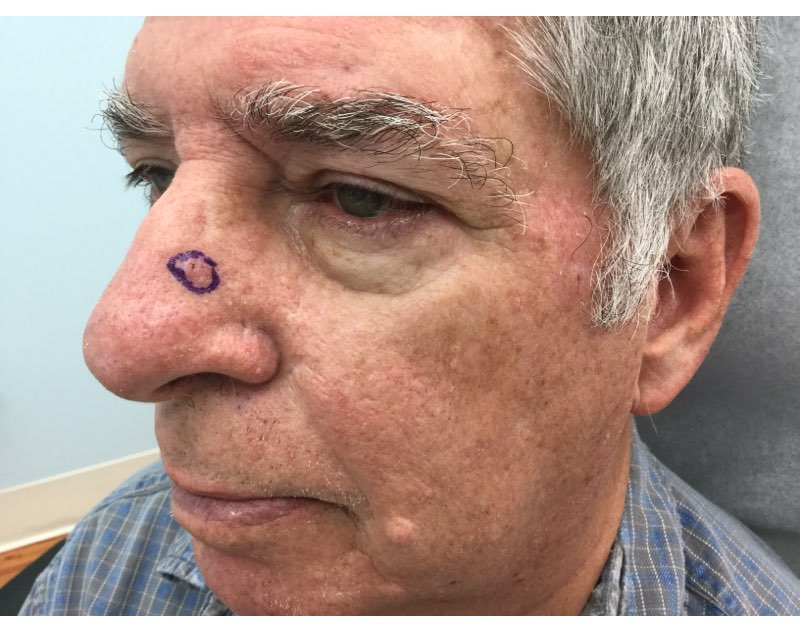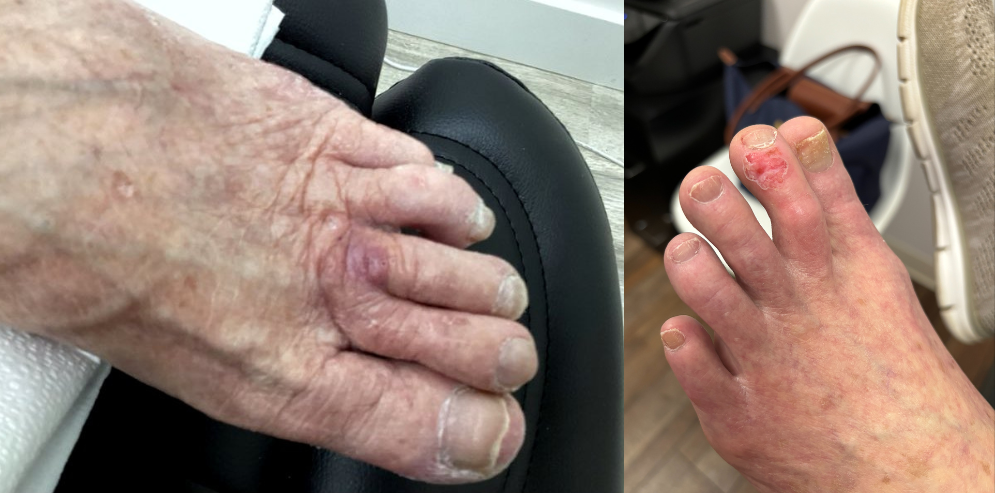
What is the difference between verrucous skin cancer and squamous cell skin cancer? Verrucous skin cancer is a rare variant of squamous cell skin cancer, one of several common forms of skin cancer. While squamous cell skin cancer can appear almost anywhere on the body, verrucous skin cancer is more localized, often appearing in specific areas where there is lower exposure to UV rays.
What is Squamous Cell Skin Cancer?
Squamous cell skin cancer is a common form of skin cancer that tends to be slow growing. It affects an estimated 1.8 million patients annually. It can appear in a wide variety of colors, shapes, and textures. However, one unifying characteristic is a sore that refuses to heal or go away on its own. This form of skin cancer is typically caused by overexposure to sunlight or ultraviolet rays, which is why many instances of squamous cell skin cancer appear on body parts that see the most sun, including the face, head, neck, ears, and arms. Squamous cell skin cancer can also appear inside the body—and these cases are generally classified as verrucous skin cancer.
What is Verrucous Skin Cancer?
Verrucous skin cancer is a variant of squamous cell skin cancer, a variant that most commonly appears inside the body, or in external areas that are less exposed to sunlight and UV rays. Verrucous skin cancer is known by a variety of names, including:
- Ackerman’s tumor
- Buschke-Loewenstein tumor
- Florid oral papillomatosis
- Epithelioma cuniculatum
- skin cancer cuniculatum
- Cutis papillomatosis carcinoides of Gottron
Where Can You Get Verrucous Squamous Cell Skin Cancer?
Typically, verrucous skin cancer forms in the cells found on the inside of the cheeks and lips, but it can be found elsewhere, including:
- On the gums
- On the tongue
- On the bone that holds tooth sockets (mandibular alveolar crest)
- In the larynx
- Around the genitals
- In the esophagus
- On the feet
When found inside the mouth, verrucous skin cancer is believed to be caused by tobacco use, particularly with chewing tobacco or snuff. Other cases have been linked to the human papillomavirus or HPV.
Verrucous Squamous Cell Skin Cancer Characteristics & Symptoms
Verrucous skin cancer is a type of squamous cell skin cancer, so it can grow very slowly. It can take several years for people with this form of skin cancer to notice symptoms. Verrucous skin cancer appears commonly as a bumpy, wart-like area that’s about 3.0–5.0 centimeters in size. It can invade local tissue, cartilage, and bone, which can cause other health issues. The good news is that it rarely spreads to the lymph nodes and has a good prognosis if it’s caught early.
The Difference Between Verrucous Skin Cancer and Squamous Cell Skin Cancer
The biggest difference between verrucous skin cancer vs. squamous cell skin cancer is how the skin cancer area forms. In fact, the two types are more similar than they are different, with similar physical characteristics and treatment methods available to both.
The best way to discern between verrucous skin cancer vs. squamous cell skin cancer is to schedule a check-up with your dermatologist. A professional skin cancer screening will help you stay on top of developments in your skin’s health, and lead you to the correct course of action should complications arise.
Learn More About GentleCure™ as a Treatment for Squamous Cell Skin Cancer
Image-Guided SRT is an exceptional treatment method for squamous cell skin cancer. If you’ve been diagnosed with this common form of skin cancer and want to learn more about GentleCure™, the surgery-free cure for common skin cancers, contact GentleCure or call us at 855-936-4411. Be sure to also speak with your doctor or dermatologist.








